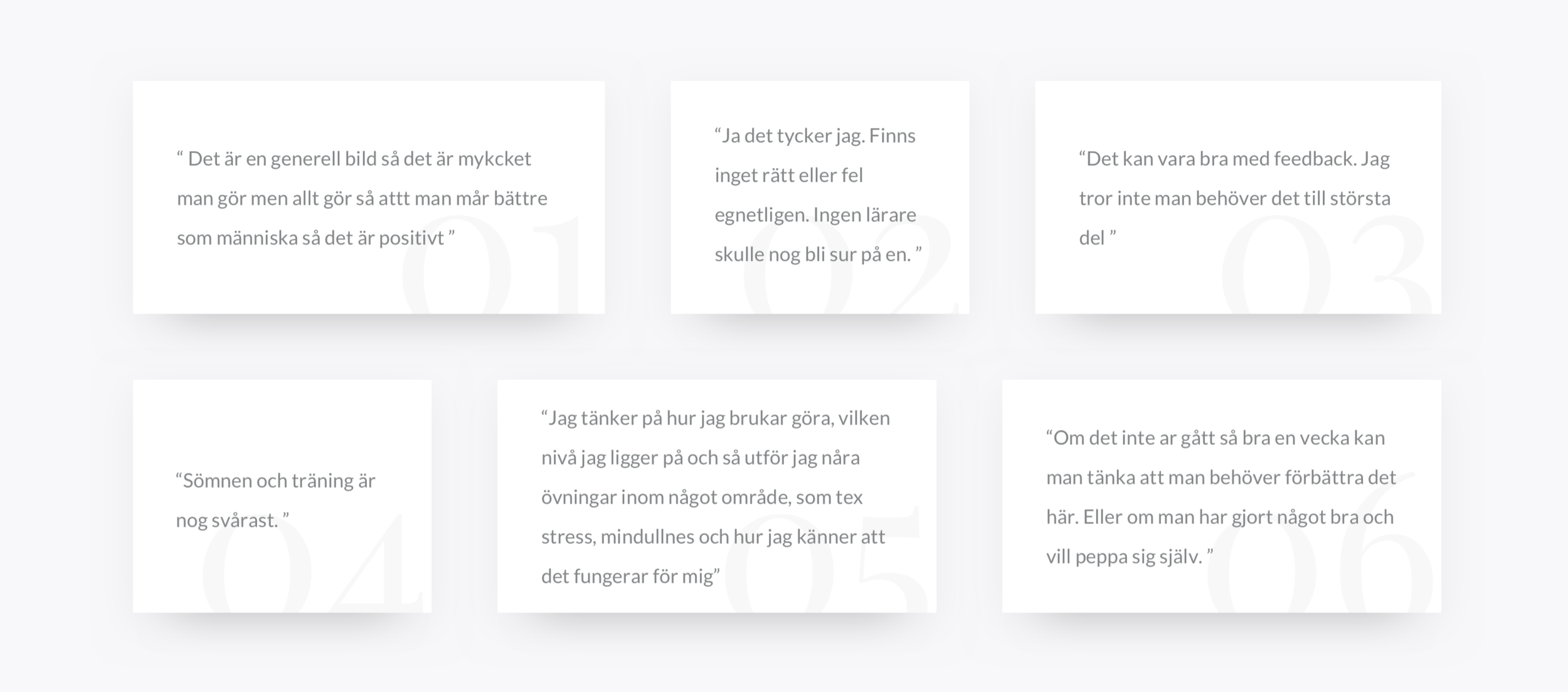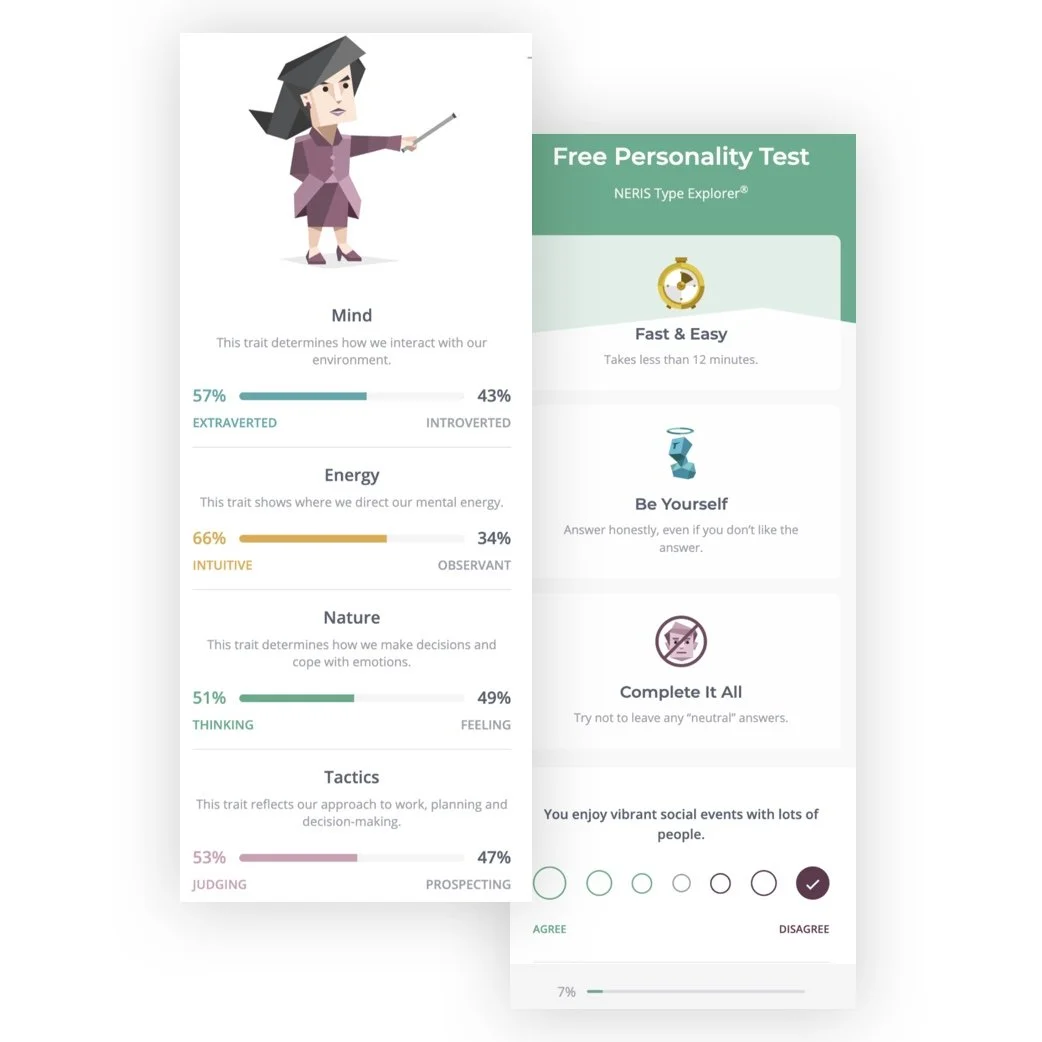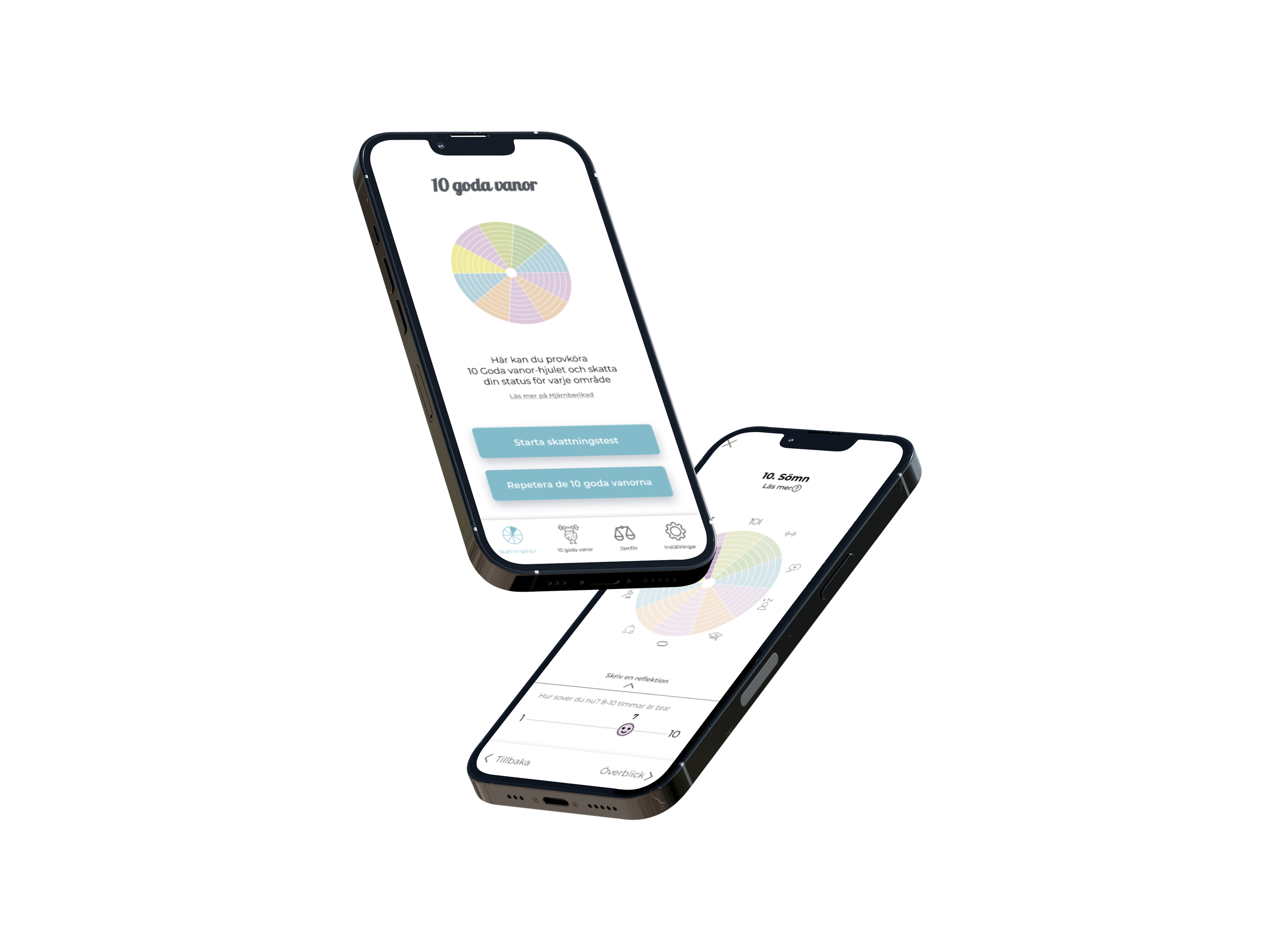
client – Hjärberikad
The digitised self-assessment wheel
Hjärnberikad AB contacted us to digitize a self-assessment wheel. The goal was to design a prototype for help & support, follow-up meetings, save data, and summarize tips with inspiration. Using digital strategies such as UX research, interviews, sketches, user studies, and evaluation methods, the project resulted in a digital prototype.
Design process
UX-Research
In order to develop a comprehensive understanding of the context, a process involving competitive research, interviews, and SWOT analyses was undertaken.
Scenarios
We have engaged with three distinct categories of scenarios in our design process: contextual scenarios, key-path scenarios, and validation scenarios. These scenarios are intended for utilization by the primary audience, coming to life through the primary persona.
Design through research
This involves using research to focus on important questions about different strategies for creating appropriate study questions. Assessing whether the design works and getting user feedback on early prototypes, become key parts of a user-centred design approach.
Design solution
Personas
A "persona" is a fictional substitute user designed to emphasize distinct behavioral and demographic traits present within a real target user group. In the realm of User Experience (UX), personas assist in maintaining a clear focus on particular user archetypes throughout the design process.
We have developed a prototype for a self-assessment wheel based on the concept of 10 positive habits. Within this self-assessment wheel, our primary target audience, which consists of high school students, will be able to evaluate themselves using the framework of these 10 positive habits. The creation of the design solutions is rooted in evaluation methods aimed at testing the functionality of the prototype.
UX-Statement
“The challenge lies in making the self-assessment test accessible to a larger audience, allowing them to save their results and subsequently compare outcomes from various instances.”
UX-Research
Semi-structured interviews
By posing semi-structured interview questions, the opportunity arises to delve deep and comprehend users' experiences, emotions, and behaviors within a real context.
Examples of questions devised for the project:
Can you describe the process when you perform the test?
Follow-up questions like "why," "how," etc.
Do all individuals approach it in the same manner?
How motivated are you to carry out the test?
How could this enhance your motivation?
How engaged do you perceive other students to be in the self-assessment test?
Do you feel you can respond honestly knowing that others might access the information? (Such as teachers or guardians)
Why or why not?
Do you usually fill out the comments section on the Self-Assessment Wheel? Do you usually complete all sections?
Would you be available for further meetings if necessary?
Here are some examples of responses from the respondents
SWOT Analysis
We chose to base our approach on a SWOT analysis to assess Strengths, Weaknesses, Opportunities, and Threats. We conducted online research to identify applications and websites featuring similar self-assessment tests. We observed that most of these platforms had more weaknesses than they posed competitive threats. There were opportunities for further development, and this is where we realized the potential for us to implement and draw inspiration from the environmental analysis we had carried out.
Here's an example of one of our SWOT analyses:
Why SWOT Analysis
Design through research
sketches
We sketch to visualize our ideas, which leads to an attempt to understand the user's problem. This process is beneficial not only for ourselves but also for other team members. Through sketches, we gain a better overview when we see it visually, collectively.
Here are some examples of sketches
Design solutions






